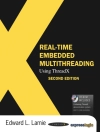Wireless networks represent an inexpensive and convenient way to connect to the Internet. However, despite their applications across several technologies, one challenge still remains: to understand the behavior of wireless sensor networks and assess their performance in large-scale scenarios.
When a large number of network nodes need to interact, developing suitable analytical models is essential to ensure the appropriate coverage and throughput of these networks and to enhance user mobility. This is intrinsically difficult due to the size and number of different network nodes and users.
This book highlights some examples which show how this problem can be overcome with the use of different techniques. An intensive parameter analysis shows the reader how to the exploit analytical models for an effective development and management of different types of wireless networks.
Table des matières
Preface ix
Introduction xi
List of Acronyms xv
Part 1. Sensor Networks 1
Chapter 1. Fluid Models and Energy Issues 3
1.1. The fluid-based approach 4
1.1.1. Sensor density and traffic generation 5
1.1.2. Data routing 5
1.1.3. Local and relay traffic rates 6
1.1.4. Channel contention and data transmission 6
1.1.5. Mean packet delivery delay 7
1.1.6. Sensor active/sleep behavior 7
1.2. Network scenario 7
1.3. The sensor network model 11
1.3.1. A minimum energy routing strategy: computing u(r:r) 11
1.3.2. Channel contention and data transmission: computing s(r) and PR(r) 17
1.3.3. Mean packet delivery delay: computing q(r) 22
1.4. Results 24
1.4.1. Model validation 25
1.4.2. Model exploitation 28
1.4.3. Model solution complexity and accuracy 35
Chapter 2. Hybrid Automata for Transient Delay Analysis 37
2.1. Event detection in WSNs 37
2.1.1. The 802.15.4 MAC protocol 39
2.2. Model for single-hop network topologies 40
2.2.1. Single message transfer 40
2.2.2. Multiple message transfers 43
2.3. Solution technique 44
2.3.1. Time discretization 44
2.3.2. Transient solution 46
2.3.3. Performance metrics computation 49
2.4. Model for multi-hop network topologies 50
2.5. Model validation and exploitation results 52
2.6. Discussion 57
Part 2. Vehicular Networks 59
Chapter 3. Safety Message Broadcasting 61
3.1. System description 62
3.2. Dissemination of safety messages 63
3.2.1. The spatial differentiation approach 63
3.2.2. The safety application 64
3.3. Assumptions and notations 65
3.4. Model outline 66
3.5. Computation of the block probability 67
3.6. Computation of the probability of first reception 69
3.6.1. A Gaussian approximation to the transient system behavior 73
3.7. Performance evaluation 77
3.7.1. The impact of power capture 77
3.7.2. The case of occupation probability rho = 1 79
3.7.3. The case of homogeneous occupation probability rho < 1 80
3.7.4. The case of inhomogeneous occupation probability 83
3.7.5. The impact of the forwarding policy 85
Chapter 4. Modeling Information Sharing 89
4.1. System scenario 89
4.2. Modeling information exchange in IVN 90
4.2.1. Model description 91
4.3. Computation of the probability of successful information retrieval 93
4.4. Model validation and exploitation 98
Part 3. Cellular Networks 103
Chapter 5. Multi-RAT Algorithms 105
5.1. RAT network 106
5.1.1. Scenario 107
5.1.2. RAT selection strategy 108
5.2. Network model 109
5.2.1. Functional rates 110
5.3. Model solution 115
5.3.1. Analytical approach 115
5.3.2. Computation of performance metrics 117
5.4. Performance evaluation 118
5.4.1. Setting and results 119
Bibliography 123
Index 127
A propos de l’auteur
Carla Fabiana Chiasserini is Associate Professor in the Department of Electronics and Telecommunications at the Polytechnic University of Turin in Italy.
Marco Gribaudo is Associate Professor in the Department of Electronics, Information and Bioengineering at the Polytechnic University of Milan in Italy.
Daniele Manini is Assistant Professor in the Computer Science Department of the University of Turin in Italy.












